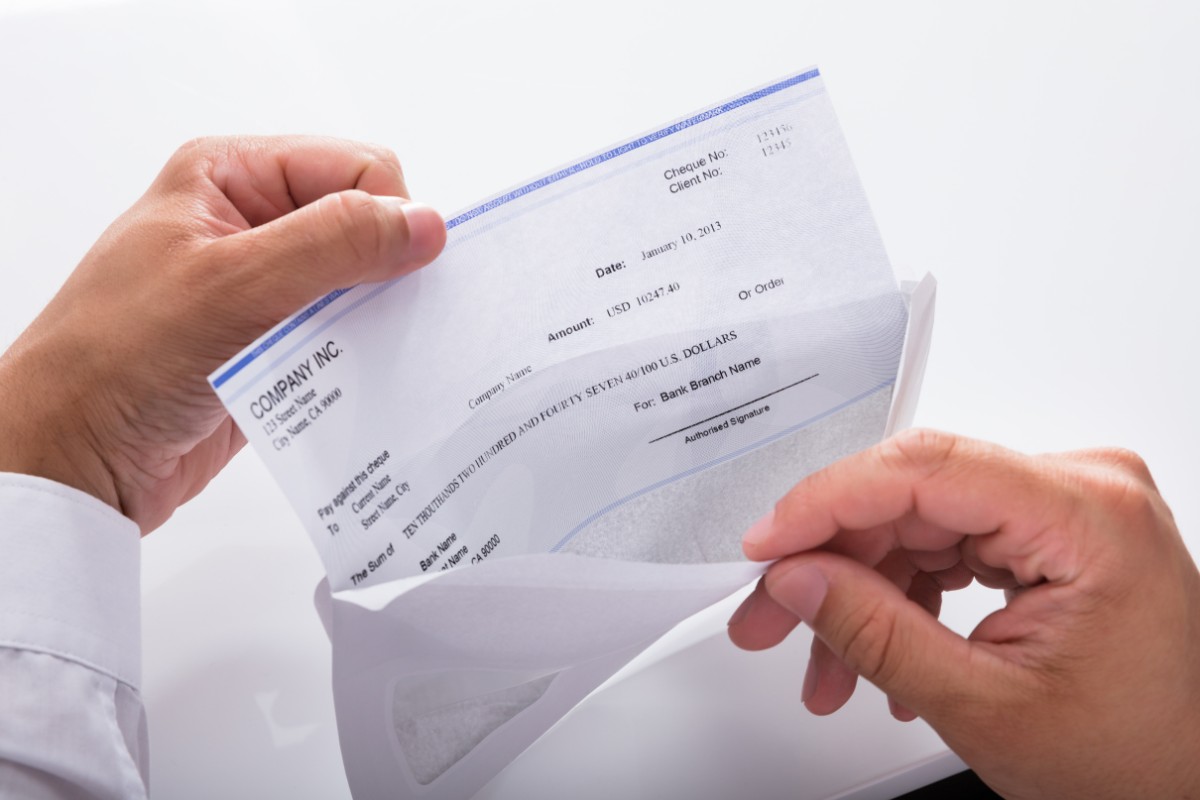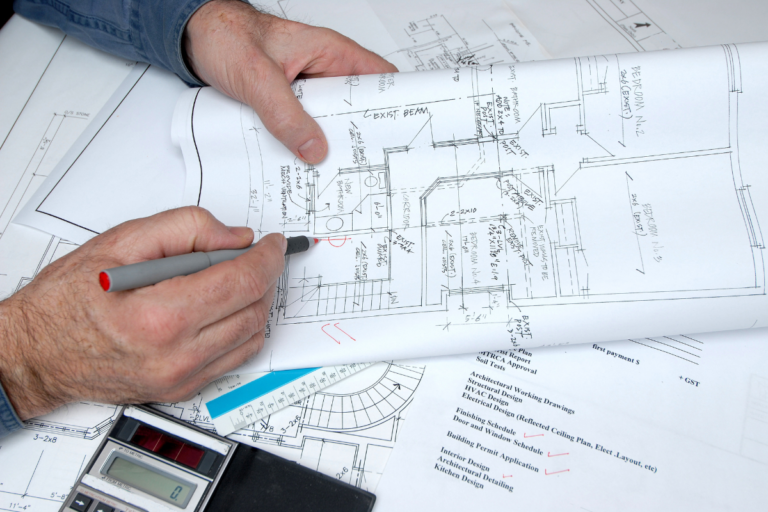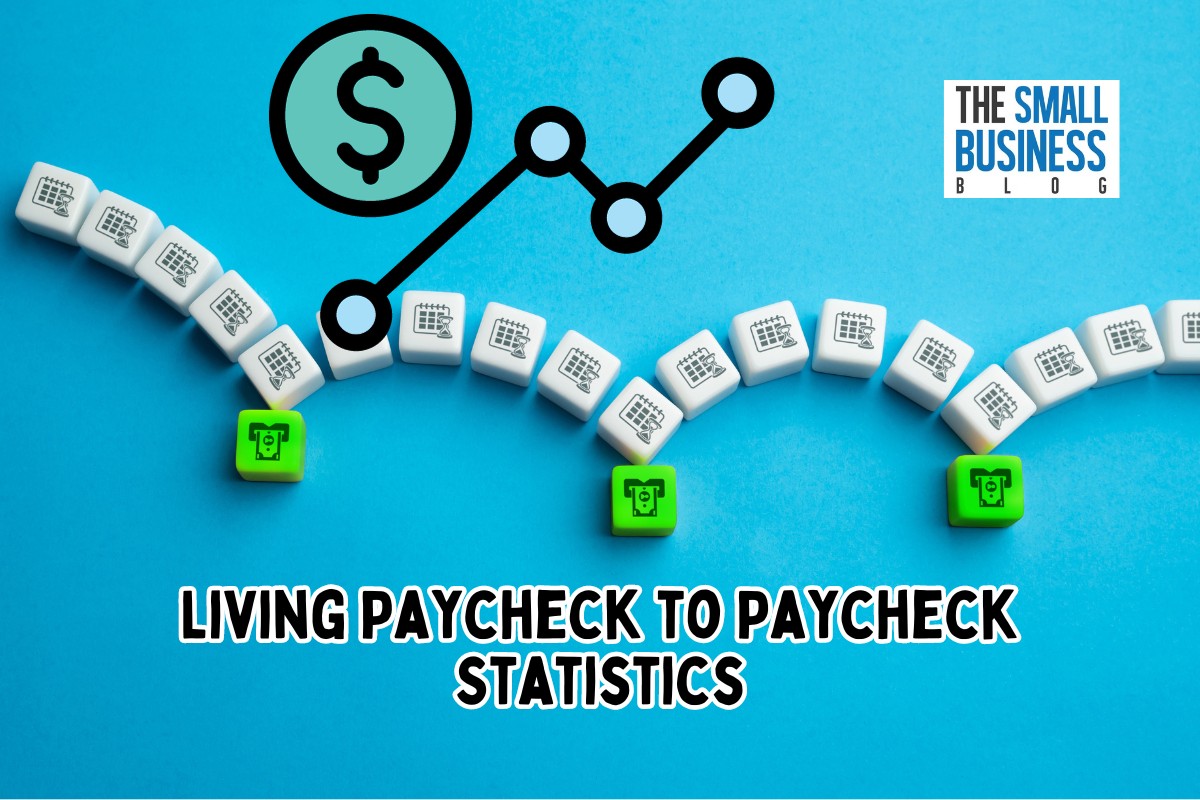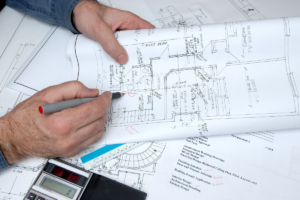Rising inflation and interest rates for home mortgages and other loans have turned even top-earning households into those who are “living paycheck-to-paycheck”.
Statistics show that somewhere between 60% and 80% of Americans are living paycheck to paycheck, as the number of households that do rise.
In this article, we will discuss the living paycheck to paycheck statistics you need to know.
Post Contents
- 1 Key Statistics
- 2 Top Living Paycheck to Paycheck Statistics in 2024
- 2.1 1. 62% of American adults claim to live paycheck to paycheck.
- 2.2 2. Metlife reported that 55% of American workers say they live paycheck to paycheck.
- 2.3 3. 74% of Americans report they feel stressed regarding their finances.
- 2.4 4. A whopping 78% of survey respondents said they would struggle to make ends meet if their pay was delayed just one week.
- 2.5 5. 64% of people in Western U.S. say they are living paycheck to paycheck.
- 2.6 6. 61.4% of American households in the Midwest are living paycheck to paycheck.
- 2.7 7. 60.5% of Americans in the Southern states reported living paycheck to paycheck.
- 2.8 8. 58.6% of American adults in the Northeast region of the United States say they live paycheck to paycheck.
- 2.9 9. A whopping 64% of Americans have collections on their credit reports.
- 2.10 10. 45% of American adults say they need to make at least $100,000 annually to feel financially secure.
- 2.11 11. Roughly 49% of Americans have little to no savings.
- 2.12 12. One survey revealed that Americans are feeling less optimistic about their finances.
- 2.13 13. American households are over two times more apt to feel insecure about their finances.
- 2.14 14. 69% of Urban dwelling Americans are living paycheck to paycheck.
- 2.15 15. 63% of people living in rural areas say they live paycheck to paycheck.
- 2.16 16. Roughly 44% of Americans in suburban areas are living paycheck to paycheck.
- 2.17 17. The average American can survive for up to 10 weeks without a paycheck.
- 2.18 18. More than half of Americans can’t afford a $1,000 emergency.
- 2.19 19. 58% of Millennials are living paycheck to paycheck.
- 2.20 20. 55% of women compared to 51% of men live paycheck to paycheck.
- 3 FAQs
- 4 Conclusion
- 5 Sources
Key Statistics
- 62% of American adults claim to live paycheck to paycheck.
- Metlife reported that 55% of American workers say they live paycheck to paycheck.
- 74% of Americans report they feel stressed regarding their finances.
- 78% of survey respondents said they would struggle to make ends meet if their pay was delayed just one week.
- 64% of people in Western U.S. say they are living paycheck to paycheck.
- 61.4% of American households in the Midwest are living paycheck to paycheck.
- 60.5% of Americans in the Southern states reported living paycheck to paycheck.
- 58.6% of American adults in the Northeast region of the United States say they live paycheck to paycheck.
- A whopping 64% of Americans have collections on their credit reports.
- 45% of American adults say they need to make at least $100,000 annually to feel financially secure.
Top Living Paycheck to Paycheck Statistics in 2024

1. 62% of American adults claim to live paycheck to paycheck.
Findings from a LendingClub survey from September 2023, 62% of American adults claim to live paycheck to paycheck.
That’s a significant figure, but the LendingClub report says that it’s unchanged over 2022 during the same period.
(CNBC, PRNewswire)
2. Metlife reported that 55% of American workers say they live paycheck to paycheck.
In another study by Metlife, 55% of participants said they are living paycheck to paycheck, which shows a decline from 62% in 2022.
Moreover, 52% claimed to have at least three months’ worth of savings as a cushion.
Many workers today have been trying to put as much as they can into savings just in case.
(Bankrate)
3. 74% of Americans report they feel stressed regarding their finances.
Nearly three-quarters (74%) of Americans have said they are feeling stressed about their finances, according to a CNBC survey from August 2023.
It’s believed that rising interest rates, the lack of savings, and high inflation have contributed to this issue.
This particular CBNC survey also revealed that 61% of American adult participants said they live paycheck to paycheck, which represents a rise from 58% reported in March.
(CNBC)
4. A whopping 78% of survey respondents said they would struggle to make ends meet if their pay was delayed just one week.
A different survey showed that a massive 78% of respondents said it would be a struggle to meet financial obligations if their pay was delayed by just one week.
Consider that 78% is a large percentage of workers and how just a single week of missing pay would cause them financial struggles.
This shows a startling picture of what living paycheck to paycheck looks like.
(Investopedia)
5. 64% of people in Western U.S. say they are living paycheck to paycheck.

More data from the LendingClub report showed that 64% of people living in Western U.S. reported that they are living paycheck to paycheck.
The Western states in the United States include states like California, Washington, Idaho, Oregon, Wyoming, New Mexico, etc.
This region accounts for the highest penetration of Americans living paycheck to paycheck.
(PRNewswire)
6. 61.4% of American households in the Midwest are living paycheck to paycheck.
The LendingClub report also found that 61.4% of American households in the Midwest region of the United States are living paycheck to paycheck.
The Midwest region accounts for the second highest penetration of households living paycheck to paycheck.
Midwestern states include states like Kansas, Nebraska, Missouri, Iowa, and Minnesota.
(PRNewswire)
7. 60.5% of Americans in the Southern states reported living paycheck to paycheck.
In the interest of accounting for the penetration of those living paycheck to paycheck in the United States per region, we will mention the South and Northeast.
That said, 60.5% of Southern households in the U.S. say they live paycheck to paycheck.
Southern states include states like Tennessee, Arkansas, Mississippi, Kentucky, Georgia, South Carolina, and Alabama.
(PRNewswire)
8. 58.6% of American adults in the Northeast region of the United States say they live paycheck to paycheck.
In the Northeastern region of the United States, 58.6% of households report living paycheck to paycheck.
This region accounts for the least households living paycheck to paycheck.
States in this region include Maine, New Hampshire, Pennsylvania, New York, and Vermont.
(PRNewswire)
9. A whopping 64% of Americans have collections on their credit reports.
Although Americans were given funds to offset expenses during the pandemic lockdowns and through job loss during that period, debt collections worsened during the pandemic for American households.
In fact, 64% of American households were found to have debt collections on their credit reports.
For reference, expert predictions thought that debt collections would decline during the pandemic with the offset in Covid-19 funds, but that didn’t happen as expected.
(Urban)
10. 45% of American adults say they need to make at least $100,000 annually to feel financially secure.

Feeling financially secure does depend on how much you earn or have set aside in today’s climate of high inflation and interest rates.
The cost of living has taken a substantial uptake, resulting in 45% of Americans saying they need to earn at least $100,000 or more to feel financially secure, or comfortable.
How much do you think you need to feel financially comfortable?
(Bankrate)
11. Roughly 49% of Americans have little to no savings.
One Bankrate survey showed that 49% of Americans admitted that they have little to no savings compared to last year.
Moreover, they have exhausted or nearly exhausted what savings they did have over the past several months but are now living paycheck to paycheck and unable to put more in savings.
On a good note, anyone with savings reserves they no longer have to expend are getting higher interest yields.
(CNBC)
12. One survey revealed that Americans are feeling less optimistic about their finances.
In a Federal Reserve August 2023 survey, Americans are saying they feel less optimistic about their finances than ever.
This also relates to their ability to grow their income and maintain solid credit scores to get credit for loans, mortgage, etc.
This comes at a time when inflation is high and income is staying the same, or not going up.
(Investopedia)
13. American households are over two times more apt to feel insecure about their finances.
It’s common for people to want to feel financially secure, which sometimes means just having a steady paycheck each week.
However, in the Bankrate survey, it was found that Americans are over two times more apt to feel like they are financially insecure compared to feeling financially secure.
This could involve several factors such as income earned and savings.
(Bankrate)
14. 69% of Urban dwelling Americans are living paycheck to paycheck.
In terms of the type of area in which people live, those living in Urban areas account for 69% of those living paycheck to paycheck.
Urban regions are those who live in a town or city that usually have access to a park. Smaller states have larger urban areas.
Urban areas are also well-developed with density in structures such as houses, apartments, railways, bridges, roads, and commercial structures.
(PRNewswire)
15. 63% of people living in rural areas say they live paycheck to paycheck.

We know that a large percentage of urban areas have a population living paycheck to paycheck, but what about the rural areas in the United States?
Rural areas are those related to living in the country as opposed to living in a town or city.
The rural population in the United States accounts for 63% of households claiming to live paycheck to paycheck.
(PRNewswire)
16. Roughly 44% of Americans in suburban areas are living paycheck to paycheck.
Suburban dwellers in the United States account for 44% of Americans living paycheck to paycheck.
That’s less than the 69% of urban dwellers.
The suburbs are considered areas outlying a district of a city with residential homes.
So, people living in the suburbs experience less issues with living paycheck to paycheck.
(PRNewswire)
17. The average American can survive for up to 10 weeks without a paycheck.
While we have seen figures for people who struggle to survive for one week with a delay in pay, we also find that the average American can survive for up to 10 weeks without earning a paycheck.
This average comes from all regions, across annual income earners, and other factors that impact how well wage earners live without a paycheck.
If you lost just two week’s pay, would you be able to afford the necessities?
That means the bare mininum of food, clothing, and shelter.
(Zippia)
18. More than half of Americans can’t afford a $1,000 emergency.
In the Bankrate survey it was found that 57% of Americans can’t afford a $1,000 emergency due to lack of savings.
In fact, the Bankrate Emergency Savings Report revealed that only 48% (less than half) of Americans have enough savings to handle at least three months of expenses.
Another 33% say they are “very uncomfortable” with what they have in their emergency savings funds.
Plus, 24% say they are “somewhat uncomfortable”.
(Bankrate Emergency Savings Report)
19. 58% of Millennials are living paycheck to paycheck.
In terms of generational workers living paycheck to paycheck, 58% of Millennials live paycheck to paycheck.
Moreover, 59% of the Gen X generation lives paycheck to paycheck.
The generation with the fewest people living paycheck to paycheck is the Baby Boomer generation at 47%.
(Zippia)
20. 55% of women compared to 51% of men live paycheck to paycheck.

In a survey, more women said they live paycheck to paycheck than men.
In fact, 55% of female respondents reported living paycheck to paycheck compared to 51% of male respondents.
Moreover, women say they can only make it around 8 weeks without a paycheck compared to men who say they can make it 11 weeks.
Therefore, we see a bit of a gender gap in this matter.
FAQs
How many American households have not saved money?
Statistics show that around 30% of American workers haven’t got any form of savings.
So, 33%, or a third of the total American adult population has nothing set aside for anything unexpected or an emergency expense.
A whopping 70% have less than $15,000 in savings.
How many people are in debt?
In America, data shows that 75% of American households are in debt.
Moreover, more than 50% of the 75% think they will never get out of debt.
Most people who are in debt earn between $50,000 and $99,000 annually.
Data shows that 70% of this demographic are in debt.
What do Americans own in credit card debt?
The average credit card debt among Americans accounts for over $5,660 per person.
Moreover, combined, Americans have a share of around $790 billion in credit card debt.
For reference, in 2011, this figure was $690 billion.
What is causing more people to not be able to save more?
How many American households have not saved money?
Statistics show that around 30% of American workers haven’t got any form of savings.
So, 33%, or a third of the total American adult population has nothing set aside for anything unexpected or an emergency expense.
A whopping 70% have less than $15,000 in savings.
How many people are in debt?
In America, data shows that 75% of American households are in debt.
Moreover, more than 50% of the 75% think they will never get out of debt.
Most people who are in debt earn between $50,000 and $99,000 annually.
Data shows that 70% of this demographic are in debt.
What do Americans own in credit card debt?
The average credit card debt among Americans accounts for over $5,660 per person.
Moreover, combined, Americans have a share of around $790 billion in credit card debt.
For reference, in 2011, this figure was $690 billion.
Conclusion
The number of people living paycheck to paycheck depends on what study, poll, or survey you read.
However, that figure ranges from over 60% to around 80%, according to our sources.
So, if you’re living paycheck to paycheck, you now know you’re not alone.
If you’re a marketer, you also have a better understanding of the challenges facing those who do live paycheck to paycheck.
We hope you have learned enough from these living paycheck to paycheck statistics to help you apply it to your financial strategy or marketing strategy.






























